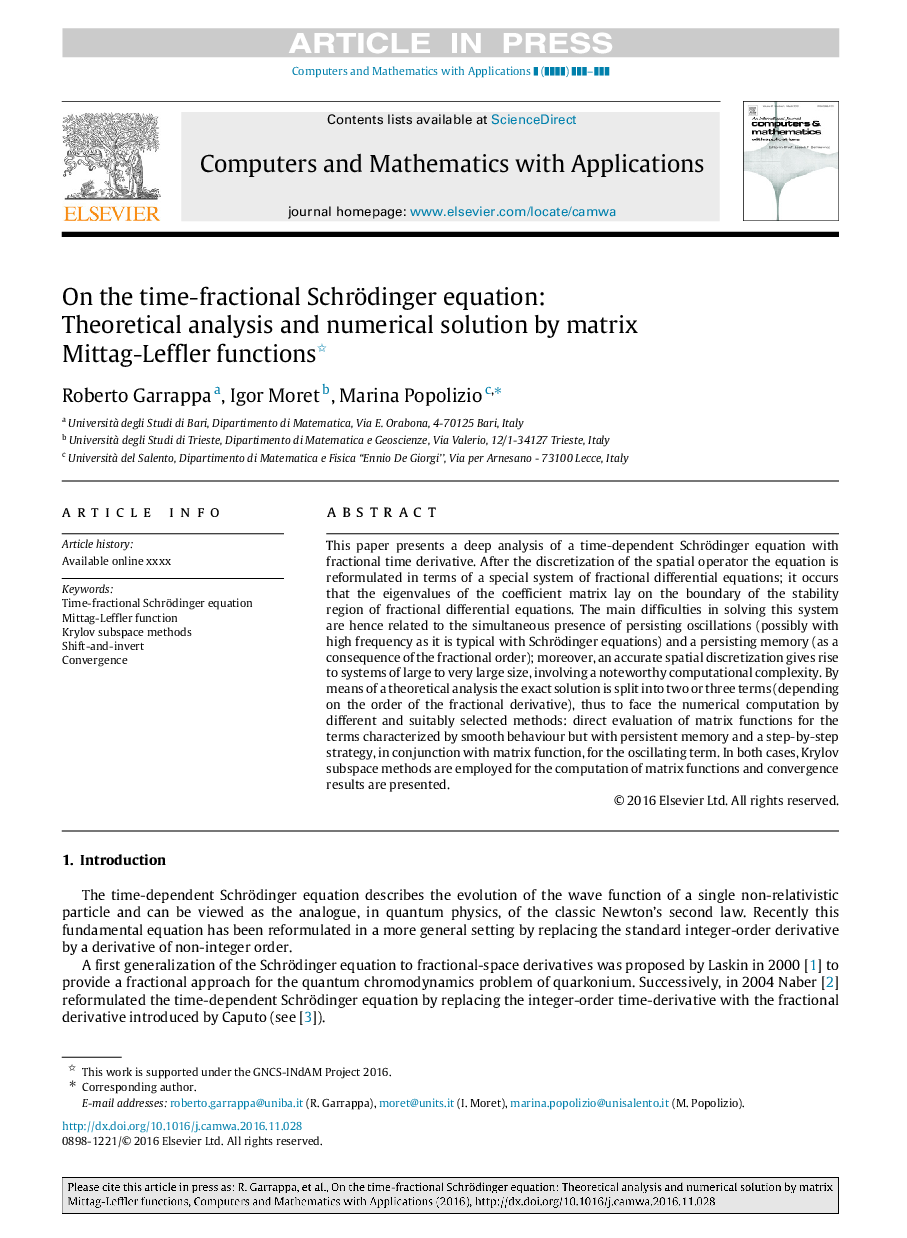| Article ID | Journal | Published Year | Pages | File Type |
|---|---|---|---|---|
| 4958482 | Computers & Mathematics with Applications | 2017 | 16 Pages |
Abstract
This paper presents a deep analysis of a time-dependent Schrödinger equation with fractional time derivative. After the discretization of the spatial operator the equation is reformulated in terms of a special system of fractional differential equations; it occurs that the eigenvalues of the coefficient matrix lay on the boundary of the stability region of fractional differential equations. The main difficulties in solving this system are hence related to the simultaneous presence of persisting oscillations (possibly with high frequency as it is typical with Schrödinger equations) and a persisting memory (as a consequence of the fractional order); moreover, an accurate spatial discretization gives rise to systems of large to very large size, involving a noteworthy computational complexity. By means of a theoretical analysis the exact solution is split into two or three terms (depending on the order of the fractional derivative), thus to face the numerical computation by different and suitably selected methods: direct evaluation of matrix functions for the terms characterized by smooth behaviour but with persistent memory and a step-by-step strategy, in conjunction with matrix function, for the oscillating term. In both cases, Krylov subspace methods are employed for the computation of matrix functions and convergence results are presented.
Related Topics
Physical Sciences and Engineering
Computer Science
Computer Science (General)
Authors
Roberto Garrappa, Igor Moret, Marina Popolizio,
